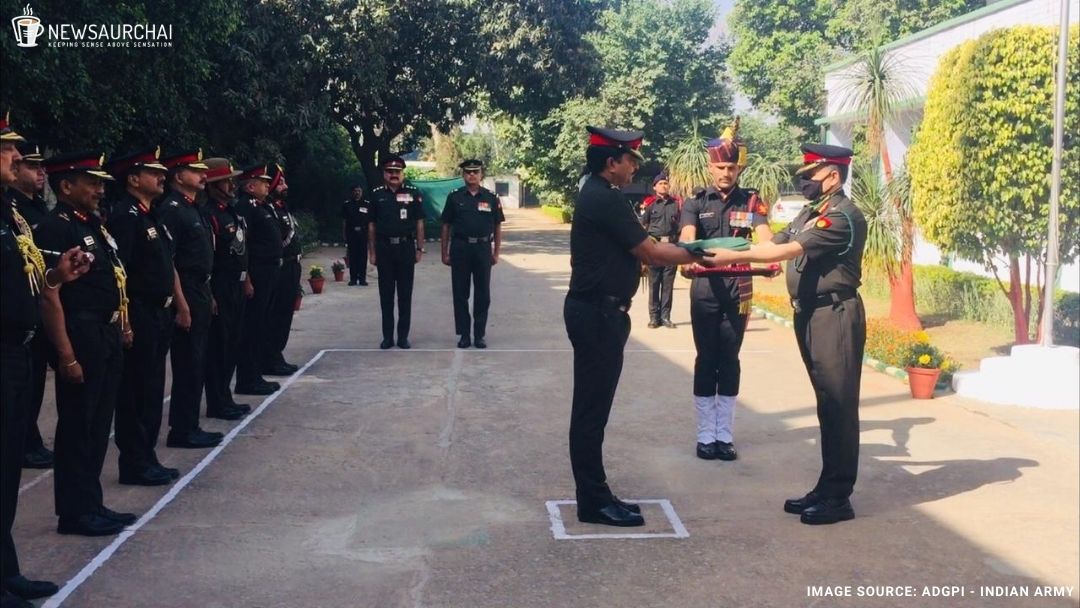
After over a century of exceptional service to troops across the nation, the Indian Army on Wednesday formally dissolved the Military Farms Service at a Delhi Cantonment ceremony. The Military Farms Service administered 39 Military farms spread over 20,000 acres of its length and breadth.
“After 132 years of glorious service to the nation, curtains were drawn on this organisation. All the officers and workers have been redeployed within the ministry to continue providing service to the organisation,” the Indian Army said.
The Military farms were initially set up to supply nutritious cow’s milk to troops lodged in garrisons located in remote areas across British India. The closure is set to help the Indian Army save a total of Rs.280 crores, spent on maintaining the land, cattle, and staff salaries.
History Of Military Farms
On 1st February 1889, the first Military farm was established in Allahabad, Uttar Pradesh. With the primary purpose of supplying milk and butter to troops deployed across British India, many other farms were built remotely, lodging army troops in the later years.
Initially, the farms were mainly constructed in the Central, Southern, and Western command posts of the Army. Subsequently, when the Eastern and Northern commands were raised, farms were set up in these areas to ensure the troops’ supply of milk. These farms were indispensable as cantonments were isolated from the nearest urban area.
In the years to follow, the Military farms saw their role expand from producing and supplying milk to artificially inseminating cows under ‘Project Frieswal’. The project intended to develop milch cattle through cross-breeding to suit the tropical climate of sub-continental countries like India.
The Military Farms launched the project in collaboration with the Indian Council for Agricultural Research (ICAR). At the time, the project was accredited as the most extensive cattle cross-breeding programme in the world. At one point, the ICAR had also found that Military farms held the most significant amount of cattle in the country.
The Post-Independence period saw Military farms develop and prosper. With over 30,000 heads of cattle housed in the 130 farms spread across the country, the aim was to supply milk daily.
During the 1971 war, the military farms supplied milk to the Eastern and Western war fronts. They also provided yeoman service during the 1971 war and supplied milk to Kargil’s Northern command operations. In the 1990s, military farms were constructed in Leh and Kargil to ensure a daily supply of milk to troops deployed in the region.
The Military farms also teamed up with the Defence Research and Development Organisation (DRDO) in the development of bio-fuel
The Closure
With the British-era military farms set to shut down, the Indian Army will save Rs.280 crores on operating these farms. Approximately 25,000 cows bred in 39 farms across the country when the decision was announced back in 2018.
Spread over 20,000 acres of land in the country, the military farms employed 1,000 employees entrusted with maintaining these farms. The permanent staff at these farms have been transferred to other departments under the Ministry of Defence (MOD). A majority of these employees are civilian personnel since permanent recruitment was scarce and temporary recruitment had been carried out therein.
The Indian Army said that the farms had become a liability for the force as they occupied large acres of land utilised for other purposes.
In 2013, the closure of Military farms – in a phased manner – was first recommended by the directive of the Quarter Master General’s branch of the Army Headquarters. The following year, supplying milk and milk products was transferred from the Military Farms to the Army Service Corps (ASC).
In 2016, several Army departments’ reorganisation by a committee under Lt Gen DB Shekatkar(retd) recommended Military Farms’ closure. In 2018, a directive issued by the Ministry of Defence required all the Military farms to sell their cattle to central or state dairy departments or state dairy cooperatives.
Although the cross bread Frieswal cows’ market cost was around Rs 100000 per cattle, many of the cattle were sold for a paltry sum.
“In an effort to hurry the shutting down process, the cows have been sold to state governments and other departments at Rs1,000 per animal”, the Indian Army stated. However, the nominal price was levied to ensure a complete transfer of the cattle from Military Farms to other organisations. Yet, despite these low prices, the cows have not attracted many buyers, stated an India Today report.
After 132 years of glorious service to the Nation, curtains were drawn on Military Farms on 31 Mar 2021. All Officers & Staff have been redeployed within the Ministry of Defence to continue providing service to the Nation.#HarKaamDeshKeNaam pic.twitter.com/Mrc6qg68eM
— ADG PI – INDIAN ARMY (@adgpi) March 31, 2021
For over a century, the military farms devotedly supplied over 3.5 crore litres of milk. The farms were also credited for introducing organised Dairying in India. Besides supplying milk and butter, the military farms also supplied hay to the animal transport units of the Indian Army.
Most of the 20,000 acres of land belonging to the Military Farms are located in prized locations. The land is spread across cities such as Lucknow, Ambala, Kolkata, Meerut, Srinagar, and Guwahati. The decision regarding the utilisation of this land is yet to be undertaken by the Ministry of Defence.





